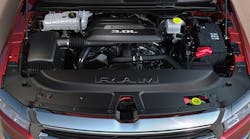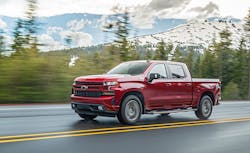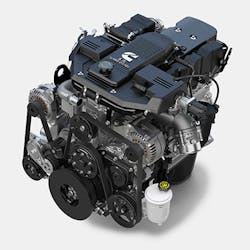Full-size, half-ton pickups powered by modern diesel engine get one-third more miles per gallon than their gasoline counterparts — 24 mpg to 18.1 mpg, research from IHS Markit concluded.
“New diesel engine options now available in full size/half-ton pickup trucks, including those from Chevrolet, GMC, and Ram Trucks, now bring important new fuel savings opportunities to America’s most popular selling vehicles, ” said Allen Schaeffer, executive director of the Diesel Technology Forum.
Concerning emissions, diesel saves 200 gallons per year over the traditional consumer fuel. The modern diesel, unlike the black smoke-belching behemoths of 20 years ago, use advanced biofuels and renewable sources to further reduce their carbon footprint.
By 2025, America could save 1 billion gallons of fuel due to diesel savings in the light-duty segment.
Another benefit is longer range, needing a refill at 550 miles as opposed to 420 miles with gas.
“If all full-size pickup trucks in the U.S. were to be powered by a diesel engine, the research found that we would realize a savings of ~500 million gallons of fuel for one model year; an amount equivalent to 15 percent of the U.S. car fleet switching entirely to EVs,” the Diesel Technology Forum wrote.
About 2.7 million pickups in the United States will be sold in the United States in 2019, according to Statista. That is a 6% drop from 2018, and is expected to hit a bottom of 2.35 million in 2021, before beginning to rise again. With the increase in efficiencies, more of those sold may well be diesel powered.
“If every full-size pickup sold today in America were a diesel, we could realize more than 500 million gallons of fuel savings in year,” Shaeffer said. “This would work out to be the same greenhouse gas emission savings gained as if 15% of the car fleet switched entirely to electric vehicles.
“This analysis demonstrates how more sales of diesels in medium and full-size pickup trucks, the vehicle types American car and truck buyers prefer, can deliver big benefits to both consumers and society,” he continued. “There are many ways we have to use less fuel and get meaningful reductions in greenhouse gas emissions, and we should embrace them all.”
The Diesel Tech Forum counted 50 diesel choices (including vans, sedans and jeeps) available in the U.S. market. The advocacy organization cited the 2020 Chevrolet Silverado 1500 Duramax diesel, which has an EPA combined fuel economy of 33 mpg, and the 2020 Ram 1500, which was named the 2020 Green Truck of the Year by the Green Car Journal, as standouts in the field.
“From the moment the engine is started, to its idle, acceleration and highway cruising, the 3.0L Duramax performance will change perceptions of what a diesel engine can offer in refinement,” said Nicola Menarini, Chevolet director for diesel truck engine program execution. “With advanced technologies that draw on global diesel expertise, it’s a no-compromise choice for those who want the capability and driving range of a diesel in a light-duty truck.”
The Duramax uses an Exhaust Gas Recirculation design with a new low-pressure system that adds to the high-pressure system, “supporting continual adjustment of exhaust backpressure for more efficient operation,” Chevy explained.
The Ram 1500 gets 32 mpg and 12,560 lb. max towing with the 3.0L EcoDiesel V6 engine.
At the heavy-duty end, the 2019 Ram 3500, which uses a 6.7L high output Cummins turbo diesel engine, gets up to 1,000 lb.-ft. of diesel torque and tows up to 35,100 lbs. The 6.4L Hemi V8 engine gets 429 lb.-ft. of torque and has about half the towing power—18,210 lb. The Ram 3500’s diesel powertrain warranty is also 100,000 miles vs. the gas version’s 60,000 mile one.
Cummins announced it is looking for more ways to achieve a net-zero carbon future with milestones set for 2030 and 2050.
“Our products have a large environmental footprint," Cummins CEO Tom Linebarger said in a recent press call. “They contribute significantly to climate change and they contribute significantly to economic goals and strong communities.”







